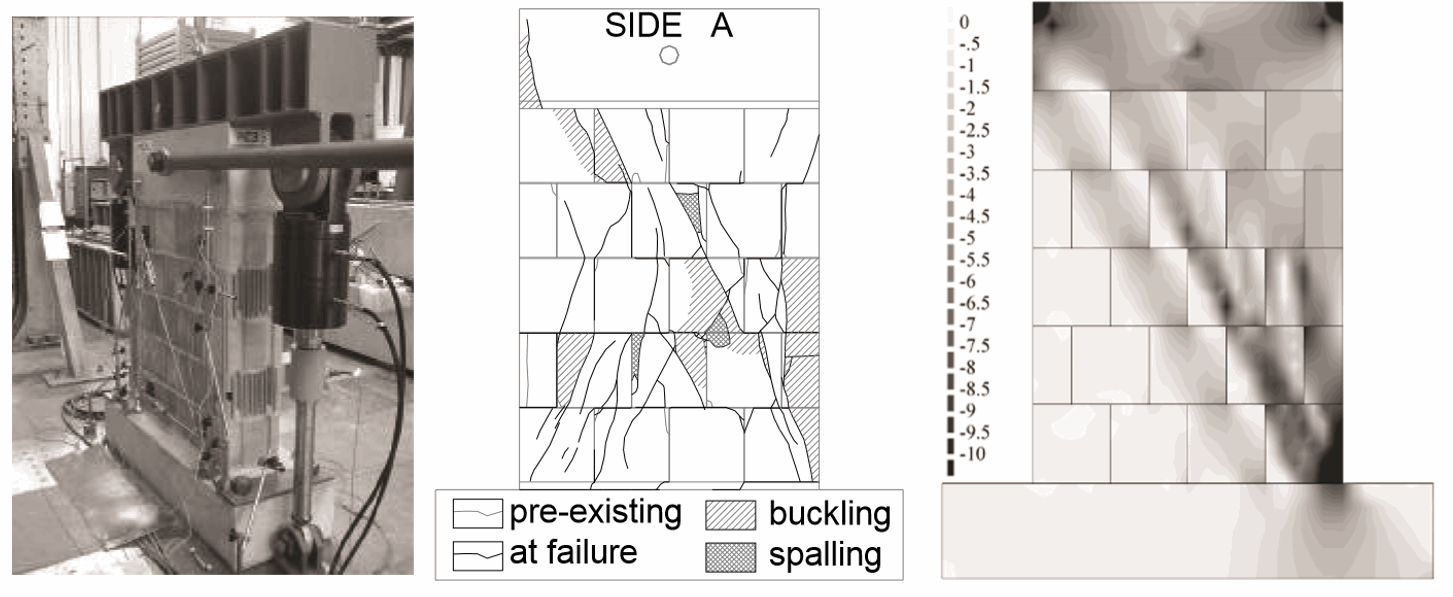F. da Porto1, G. Guidi2, E. Garbin3 and C. Modena4
Dept. of Structural and Transportation Eng., University of Padova, Via F. Marzolo 9, 35131, Padova, Italy
1 Assistant Professor, daporto@dic.unipd.it,2 PhD student, guidi@dic.unipd.it, 3 PhD, garbin@dic.unipd.it, 4 Full professor, modena@dic.unipd.it
ABSTRACT
Extensive experimental research aimed at defining the mechanical behavior of load bearing masonry walls made with perforated clay units was carried out at the University of Padova. Fifty-one specimens were characterized by means of uniaxial and diagonal compression tests and also by in-plane cyclic shear compression tests. Three types of masonry walls were investigated: masonry made with units with mortar pockets, masonry made with tongue and groove units, masonry made with units with small dimensional tolerance in height and thin layer mortar. Four types of non-linear finite element models were used in order to simulate the experimentally observed mechanical behavior. From the comparison of the obtained results, it was possible to draw some conclusions about the adopted experimental procedures, the different behavior of the three masonry typologies and the reliability of the modeling strategy to simulate the tests. On these bases, a simplified micro-modeling strategy, with the total strain rotating crack law for the units and interface elements for the masonry joints was chosen to reproduce monotonically the cyclic shear behavior of masonry.
This model was used to carry out parametric analyses of the tested masonry typologies, in order to assess the influence of the unit compressive strength on the tested specimens global shear behavior. A range of strength between 5 and 20 N/mm2 was investigated. In the present contribution, the results of the parametric finite element analyses carried out are described and discussed.
KEYWORDS: load bearing unreinforced masonry; in-plane cyclic tests; finite element modeling; unit strength.
A3-3



